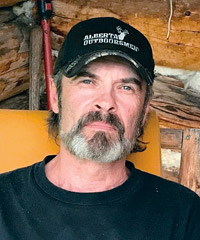Outdoor Pursuits

with Rob Miskosky
From the Editor - November 2025
Chronic Wasting Disease (CWD), often dubbed “zombie deer disease” was first identified in the 1960s in a captive mule deer research facility in Fort Collins, Colorado. In Canada, the disease likely entered through infected elk imported from South Dakota in the late 1980s to Saskatchewan game farms. The first farmed elk case surfaced in Saskatchewan in 1996, followed by a wild cervid detection there in 2000. By 2005, it had spilled into wild populations along Alberta’s eastern border with Saskatchewan, marking the onset of its push westward.
In Alberta, early surveillance focused on border wildlife management units (WMUs) where CWD prevalence in mule deer climbed from rare detections in 2005 to 50 to 85% in some areas by the early 2020s. Westward progression along major watersheds like the Red Deer, South Saskatchewan, and Battle rivers, reaching central Alberta by 2015, has not been slowed. By 2023, infection rates in white-tailed deer hit 23% province-wide, with the disease edging northward toward Cold Lake and southward toward the US border.
Saskatchewan’s landscape, riddled with over 40 infected farms by the early 2000s, fostered spillover into wild cervids that migrated across provincial lines. British Columbia (BC) represents the current frontier. Detected in two mule deer in the Kootenays in early 2024—near the Alberta border—the province now has five confirmed cases. This incursion into BC prompted swift action including mandatory testing for harvested cervids in high-risk management units, carcass transport bans, and urban deer removals in Cranbrook and Kimberley. As of February 2025, BC launched a targeted winter hunt allowing an extra deer harvest in the Cranbrook zone to thin densities and boost sampling... but will it be enough?
Our understanding of CWD comes from pioneers like Beth Williams, a veterinary pathologist who, as a Colorado State University graduate student in 1978, first classified it as a transmissible spongiform encephalopathy (TSE), akin to mad cow disease. Williams, who tragically died in a 2004 car accident alongside her husband, Tom Thorne, advocated for aggressive culls, arguing it could eradicate the main sources before environmental contamination locked in. Indeed, culls have shown promise in slowing or halting the spread when timed early and executed surgically. Manitoba’s 2021 aerial cull along its Saskatchewan border—killing hundreds of whitetails and mule deer via aerial gunning—limited cases to 30 total, averting establishment.
When first discovered in Alberta, following the advice of Williams, culls in affected WMUs took place, but controversy erupted. Environmental groups declared them as ineffective without Saskatchewan doing the same, while game farmers lobbied against them. Alberta eventually halted government-led culls—in my opinion, a terrible mistake. But public backlash—petitions from Indigenous communities and hunters—further eroded support for the culls. Yet, proactive culls, per a 2022 Journal of Applied Ecology review, could have halved Alberta’s westward rate if they had been maintained. The result: CWD is now endemic in much of eastern and central Alberta, which means, short of the discovery of a vaccine, CWD is most likely with us now forever. And this is a frightening thought.
CWD’s prions are hardy enough to linger for decades in soil and pose serious risks to humans and the food chain. Zoonotic potential (the ability to transmit from an animal to a human), though remote, isn’t zero. CWD’s westward march—Saskatchewan to Alberta and now to BC—demands renewed culls, heeding Williams’ advice and buying time for vaccines to be developed. Without this action, we are simply waiting for the inevitable. As I’ve written in the past: if CWD were to cross the species barrier into humans or the food chain, Alberta, Saskatchewan and the US would declare a public health emergency, leading to many unsavoury measures being implemented, and it would mean the end of hunting as we know it. Governments would have no choice but to ban hunting and undertake massive cull programs targeting wild cervids—deer, elk and moose.
But are we now at the point where renewed culls in Alberta would be pointless? I believe so—even if cervid populations were drastically reduced by culling, contaminated soils and water sources would simply reinfect new generations of wild cervids.
A 2021 Journal of Wildlife Management study estimated that reducing deer density by 80% in high-prevalence areas only drops infection rates by 15 to 20% over a decade due to residual prions and surviving infected animals.
Alberta’s lesson is clear—hesitation has brought about severe consequences, including the spread of CWD into BC. BC must go beyond boosting hunter harvests; immediate, targeted culls are required, and public opposition must be ignored. The ending of Alberta’s 2009 cull let CWD surge, cementing its endemic status. BC’s current low prevalence (<1%) is a fleeting chance for containment, but hunter harvests, with 70% compliance, aren’t enough. Manitoba’s 2021 border cull shows precision culling works. BC must act decisively to curb the spread, safeguard ecosystems, and avert a potential crisis, while avoiding Alberta’s costly mistake of ending culls.
For the previous Outdoor Pursuits article, click here.



